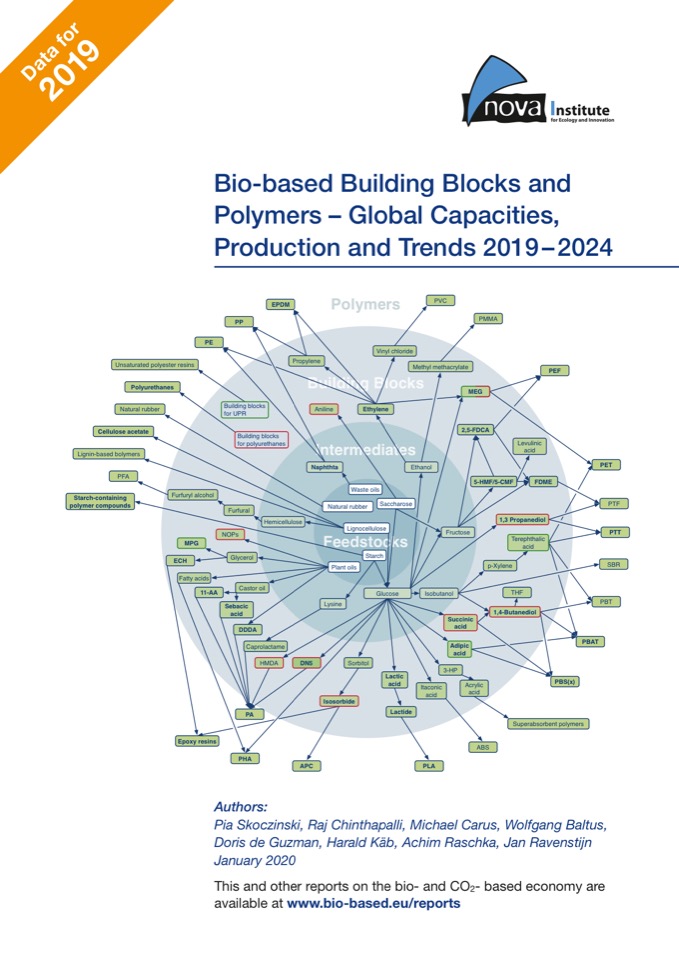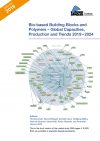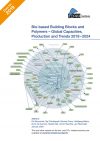Bio-based Building Blocks and Polymers – Global Capacities, Production and Trends 2019 – 2024
100 € – 500 € ex. tax
The global bio-based polymer market 2019 – A revised view on a turbulent and growing market
Turbulent times for bio-based polymers in 2019: PLA sold out despite expansion, as did PHA. Bio-based PP available for the first time, increased production of PBAT, PBS, bio-based PE, starch-containing polymer compounds and epoxy resins. Lower production is seen particularly in bio-based PET. At the same time, there is a lack of support from policy makers, who are taking bio-based and biodegradable plastics into collective punishment with fossil plastics in the Plastic Policy.
The new market and trend report “Bio-based Building Blocks and Polymers – Global Capacities, Production and Trends 2019-2024” from the German nova-Institute shows capacities and production data for all bio-based polymers in the year 2019 and a forecast for 2024. In 2019, the total production volume of bio-based polymers was 3.8 million tonnes, which is 1% of the production volume of fossil-based polymers and about 3% more than in 2018 – this CAGR is expected to continue until 2024. The major biomass feedstock used for bio-based polymer production are biogenic by-products (46%), especially the by-product glycerol from the biodiesel production, used for epoxy resin production.
Single-Site-Licence: Up to five (5) users of the Customer can access the study within one location for their own operational purposes.
Enterprise-Licence: The Customer and all subsidiaries can access the study at all company locations for their own operational purposes. Includes one hour Q&A with nova-experts.




